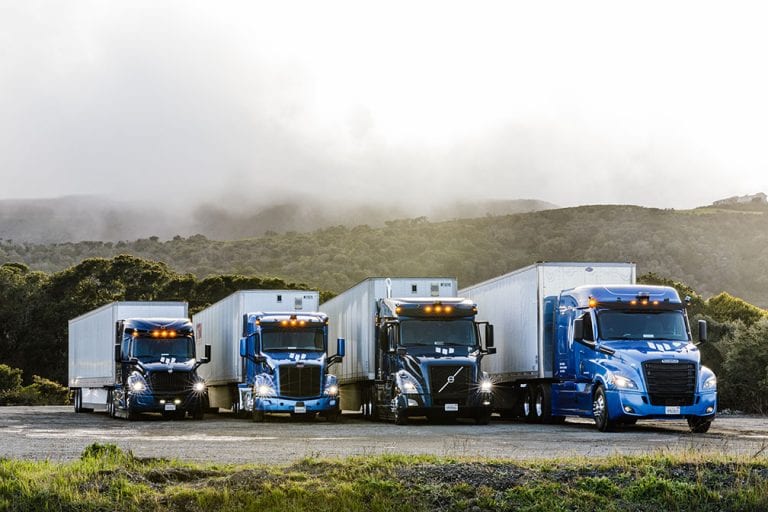SAN FRANCISCO — Embark, a developer of autonomous technology for the trucking industry, on March 31 launched a set of standard self-driving components with flexible interfaces that allow major truck OEMs — including Freightliner, International, Peterbilt and Volvo — to more easily integrate self-driving tech into their vehicle platforms.
The Embark Universal Interface (EUI) program focuses on the intersection of the four OEMs’ platform specifications rather than on a single vehicle platform, making Embark the first autonomous tech developer to attempt a universal system.
Since its founding in 2016, Embark has focused exclusively on automated driving system (ADS) technology for the trucking industry. By developing a strong technology platform that can be rapidly integrated on all major OEM trucks, Embark plans to provide OEMs with autonomous technology that is responsive to their carrier customers’ needs.
“We absolutely believe that integrating with OEMs is the path to market for self-driving trucks,” said Alex Rodrigues, co-founder and chief executive officer of Embark. “We also believe that being cross-compatible and easy to integrate into all OEM’s vehicles as their Level 4 platforms continue to develop gives us a competitive advantage.”
The EUI achieves its universality through a two-part design. Part 1 consists of a standardized components package — sensors and compute system — which have been determined through thousands of hours of design, testing and analysis. Between these standardized components and the truck, Part 2 of the EUI design is a set of physical, electrical and software interfaces that enable the standardized components package to connect to and communicate with any OEM platform’s steering, braking, throttle, telematics, power, chassis and HVAC.
At the center of the interface package is the Embark Gateway, an automotive-grade engine control unit (ECU) developed by Embark to enable application programming interface (API) communication between Embark’s technology and any OEM platform.
Embark’s long-term vision is to have its technology integrated into OEM’s truck platforms; then the OEMs can sell ADS-equipped trucks with the maintenance and warranty support needed by truck buyers.
“The launch of EUI opens the door to a much larger market opportunity for Embark by making their self-driving technology platform-agnostic,” said Pat Grady, partner at Sequoia Capital. “We’ve seen time and time again how the emergence of an open platform can serve as a galvanizing force in fast-developing markets, and this breakthrough technology from Embark has a chance to do the same for what’s historically been a complex and fragmented industry. This is a huge step forward both for Embark and for the entire trucking industry.”
Currently, the EUI program helps demonstrate the Embark Driver’s compatibility with the four major OEM platforms, an industry first — and an important milestone to carriers who purchase from multiple OEMs. The EUI program also enables Embark to grow its test fleet across the four major OEM brands, increasing Embark’s truck count and fleet diversity. Because many major carriers maintain multi-OEM fleets, Embark hopes the development of a universal interface will help companies that are working toward full or partial automation of their fleets.
“We currently purchase trucks from multiple OEMs and plan to continue this strategy to optimize the experience for our drivers and meet our total cost of ownership objectives,” said Trevor Fridfinnson, chief operating officer for Bison Transport. “Embark’s investment to integrate its autonomous driving system with the major OEMs will allow us to test and deploy autonomous trucking capabilities without introducing a new OEM into our fleet for that sole purpose.”
The Trucker News Staff produces engaging content for not only TheTrucker.com, but also The Trucker Newspaper, which has been serving the trucking industry for more than 30 years. With a focus on drivers, the Trucker News Staff aims to provide relevant, objective content pertaining to the trucking segment of the transportation industry. The Trucker News Staff is based in Little Rock, Arkansas.















